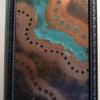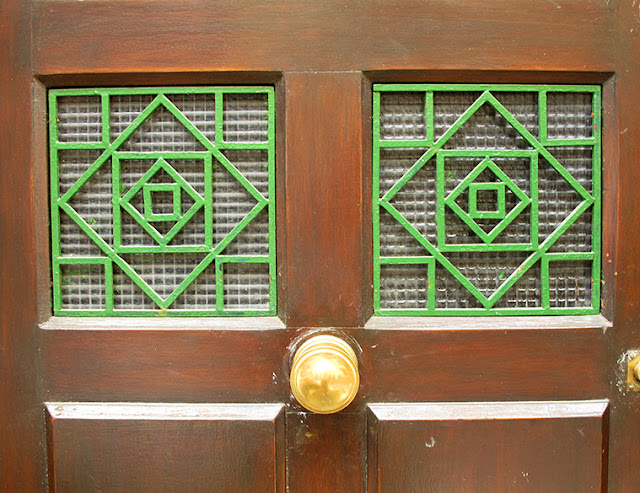

"High Desert Paleolithic Survey at Abydos, Egypt." In Journal of Field Archaeology 30 (3), pp. "Desert Pavement Disturbance and Artifact Taphonomy: A Case Study from the Eastern Libyan Plateau, Egypt." In Geoarchaeology 28 (2), pp. Clawson Mills Research Fellow, 2018 References Adelsberger, Katherine A., Jennifer R. Additional dimensions used for classification: width at midpoint: 6.15 cm width at 3/4 length: 4.23 cm thickness at midpoint: 1.59 cm distance to maximum width: 3.95 cm. The raw material is obscured by a patina, which is heavier on the non-cortical face. Multiple abrupt flake scars form a distinct notch at the distal tip. On the opposite face the thinning scars come mainly from one lateral margin and are very flat, with shorter scars coming from the other lateral margin and the distal end. There are only two invasive thinning scars on the cortical face, the rest are semi-invasive and confined to the edges. The presence of cortex around the base and covering most of one face, along with the straight profile, indicate it was made on a thin nodule rather than a flake. Discussion of the individual object This sub-cordiform biface has a steep notch on the distal tip. Lower and Middle Paleolithic artifacts in Egypt are critical for addressing questions of early human evolution and dispersal, particularly as the Nile valley was one of the main corridors for human migration ‘out of Africa’. The presence of the Lower Paleolithic artifacts makes this collection especially important, as there are fewer Lower Paleolithic sites that have been found and studied in Egypt compared to the Middle Paleolithic or later sites. However, this group of artifacts donated by Currelly contains a mixture of Lower Paleolithic and Middle Paleolithic artifacts indicating that he either collected them from multiple locations or that he collected them from a site that was re-used in later periods (e.g. Middle Paleolithic artifacts are found commonly on the surface of the high desert plateaus near the Nile valley throughout Egypt (Olszewski et al. Indeed, it is the case in the Egyptian high desert that Paleolithic artifacts can remain in-situ moving very little over vast time spans, as had been determined through survey and studies refitting flakes to cores at Abydos (Adelsberger et al. Therefore, the artifacts were probably found close to their original depositional positions. Aside from the patina, the preservation is otherwise quite good, with only minimal signs of rolling/damage, and lacking the high degree of weathering and erosion seen on Paleolithic artifacts that were naturally transported far distances.


Laffan, a trustee of the museum, writes that these flints "are from the edge of the Libyan desert where it approaches the Valley of the Kings behind Der-el-Bah’ri, and are of unusual interest." Additionally, the substantial build-up of dark brown patina covering the artifacts shows that they were likely exposed on the desert surface. Currelly participated in Edward Naville’s excavations at Deir el- Bahri between 19, and he most likely collected these artifacts from the surface of the high desert plateau behind the site, as is indicated in a letter of addressed to Edward Robinson, the then assistant director at The Met.

Discussion of the group This artifact was part of a set of 147 lithic objects donated to the Metropolitan Museum by Charles T.


 0 kommentar(er)
0 kommentar(er)
